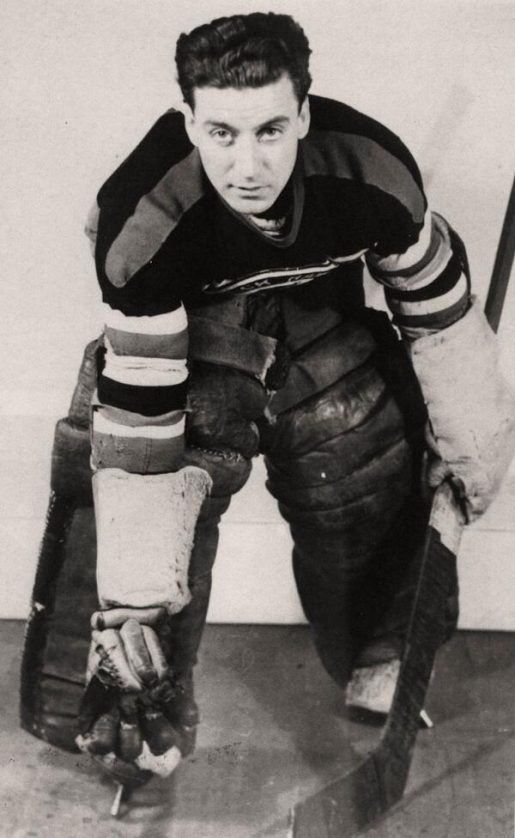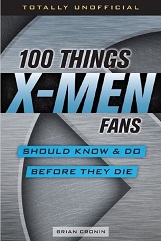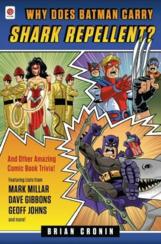Were the Chicago Blackhawks Once Forced to Pull a Local Goalie Out of a Bar to Start Game 1 of the Stanley Cup Finals?
Here is the latest in a series of examinations into urban legends about hockey and whether they are true or false. Click here to view an archive of the hockey urban legends featured so far.
HOCKEY URBAN LEGEND: Were the Chicago Blackhawks once forced to start a local goalie they found in a bar drinking on the day of Game 1 of the Stanley Cup Finals?
You only have to go back to the 2002 World Series Champion Anaheim Angels to see an example of a player plucked from obscurity thrown into the spotlight in a championship season. Angels pitcher Francisco Rodriguez was a minor leaguer who only made the 2002 postseason roster due to a rash of injuries to the Angels bullpen late in the year – he went on to become a dominant part of the Angels championship team and after a few years of being their top setup man became their regular closer in 2005, eventually setting the record for most saves in a single season. So the hope is alive in many minor league players that all they need is the right break and they could get their moment in the sun. That moment came for Alfred “Alfie” Moore on April 5, 1938, a day that began as any other for the minor league goaltender (whose season had ended weeks ago) and ended with him winning Game 1 of the Stanley Cup Finals for the Chicago Blackhawks!

However, Moore’s situation was a lot stranger than Rodriguez’s, including one of the more persistent myths in NHL history.
Read on to find out more!
As I have written about in the past, the National Hockey League (NHL), like many other sports leagues, used to have a very different idea of what constituted “sporting” or fair behavior. In Major League Baseball (MLB), teams once allowed the other team to have “courtesy runners” (read more about it in an old Baseball Legends Revealed here). Similarly, in the NHL, the Red Wings lent out their back-up goaltender (“goalie”) to opposing teams in need on more than one occasion (read more about it in an old Hockey Legends Revealed here). The reason why teams would often require the use of an emergency goalie was because teams often traveled with just one goalie. At the time, goalies played basically every single game, so teams did not find the need to pay a player just to sit around on the unlikely chance that they would be needed. This was not just something that was prevalent in the early days of the NHL, it was common well into the second half of the 20th Century!
It was not that teams did not have back-ups, as they did, they just did not travel with the team. Each team would have a variety of minor league affiliates that they could call up when in need of a back-up. The problem in 1938 was that the Blackhawks did not know they needed a back-up until the afternoon of Game 1 of the Stanley Cup Finals! The 1937-38 Blackhawks season was more than a little bit of a Cinderella story. The NHL had eight teams at the time, six of which made the playoffs. As you might imagine, with the sixth-best team in the league making the playoffs, there is a very decent chance that that sixth-best team would have a losing record, and that was exactly the case with the Blackhawks. They finished at 14-25-9, just two points ahead of the seventh-place Detroit Red Wings, and twelve points behind the fifth-place Montreal Canadiens.
In any event, the Blackhawks upset the Canadiens in Game 3 of their best of three series, while the New York Americans upset the New York Rangers in the other first round series. In an odd piece of playoff seeding (that I do not understand at all), the two teams that won each of the two NHL divisions got first round byes. That makes sense. However, they would then play each other in the next round! How does that make sense? In any event, the top-seeded Toronto Mapleleafs swept the second-seeded Boston Bruins. Meanwhile, the Blackhawks also upset the Americans 2-1 to face off against the Mapleleafs in the 1938 Stanley Cup Finals (which was a best-of-five series at the time).
As you could imagine, the Blackhawks were a significant underdog, having scored twenty less points during the season than the Mapleleafs. That was not even all of it, though, as the Blackhawks that season had decided to try something quite novel at the time – put out a roster of only players born in the United States! That did not work out so well (they lost five of their first six games), so they added some Canadian players, but still, the team was mostly U.S. born, including the first U.S. born and trained goaltender in NHL history, Mike Karakas. So the team did not only have a worse record, but they were seen as inferior period due to their owner’s odd “U.S. players only!” plan. Things got even rougher for the Blackhawks on the afternoon of April 5, 1938, the day of Game 1 of the Finals. You see, Karakas had injured his toe in the final game of the Blackhawks’ victory over the Americans. What he did not know at the time was that his toe had actually been broken! He was not going to be able to play the game and there was not enough time to get their back-up goalie, Paul Goodman, to Toronto for Game 1.
Here’s where the story really begins to get contested. You see, while the Mapleleafs were continually successful during the regular season during the 1930s (finishing either first or second in their division in seven of the eight seasons as of 1937-38), they only had one Stanley Cup victory to show for it (back in 1932). So while the rules at the time allowed teams who needed an emergency goalie to use whichever NHL goalie was available whose team had been eliminated, it was not that simple. While teams were allowed to do so, they could only do it if given permission by their opponent. One of the top goalies in the NHL, Dave Kerr of the New York Rangers (who would be named the NHL’s top goalie in 1940, as he helped lead the Rangers to a Stanley Cup victory), happened to live in Toronto. The Blackhawks thought that that was that, they would get Kerr and go from there. However, Blackhawks manager Bill Stewart was stymied by Mapleleafs owner Conn Smythe, who denied the request (Stewart later claimed Smythe originally said yes then changed his mind, while Smythe maintained that he always said no).
The Mapleleafs (and general manager Frank Selke) offered the Blackhawks two options – retired goalie Jake Forbes or minor-league goalie Alfie Moore. While the Blackhawks wanted neither, Moore was the clear pick between the two.
Alfie Moore was 31 at the time, having played professional hockey since 1926, in a variety of different leagues. Moore actually had played in the NHL as recently as the previous season, starting 18 games in goal for the New York Americans. However, he had spent the 1937-38 season in the American Hockey League (AHL), playing for the Pittsburgh Hornets. Still, he certainly was not an awful choice for an emergency goalie.
The next part of the story is one of the more persistent myths in NHL history – as the story goes, when Moore was picked to participate in the series, he was at a local bar. Various stories conflict over how drunk he was, but the main part of the story remained that he was plucked from a local bar on the afternoon of Game 1 and throw into the Stanley Cup Finals. Blackhawks captain Johnny Gottselig has a fairly extensive (and pretty unbelievable, as it contradicts pretty much every other version of the story, including the ones that have Moore at a bar on the day of the game) story about going to get Moore at the bar and watching Moore proceed to have another ten or so beers. In actuality, Moore was summoned to appear at the game when he arrived at his home on that April afternoon (newspaper coverage of the event at the time confirm this). However, that is not to say that Moore was not coming from a bar, so I think the story very likely could have a lot of truth to it (Moore even said years later, “I had had a few beers,” but it is unclear if that was just him trying to perpetuate the myth or if he legitimately had been drinking that day).
What is interesting is that when Moore was summoned to Maple Leaf Gardens that night, he was not even told that he would be playing! Moore apparently had talked to Bill Stewart about buying tickets to the game, so he perhaps thought that he was being called to the arena for that reason (although I don’t buy that particular reason – I believe that Moore had talked to Stewart about buying tickets, heck, some sources say that Stewart actually sold him tickets, but Moore had to know that there was something more than tickets involved when they asked him to bring his gear!). In any event, Selke likely kept Moore in the dark because Selke himself did not know for sure what would happen, so why promise something that might not happen? In any event, Moore did indeed end up starting in goal, and when he allowed a Toronto goal less than two minutes into the game, things looked bleak for Chicago. However, that goal was all that Moore would allow, as the Blackhawks came back to win 3-1. After the game, Moore was angry that he was caught in the middle of this squabble, especially since he was a Toronto fan (after all, that was where he lived) and even more so, his brother was a big Toronto fan who was not pleased with his brother playing against the Leafs.
The next twist in the story came when Bill Stewart announced that he would play Moore in Game 2, also in Toronto. Now, however, it was the Mapleleafs who did not want Moore to play! They insisted that since the back-up goalie Goodman was now available, that the Blackhawks would have to play him. The League office agreed, and Goodman started in Game 2 (and lost 5-1). Luckily for the Blackhawks, Karakas was sufficiently healed (he played with a steel toe covering his broken toe) for the rest of the series, and he allowed just two goals over the next two games as the Blackhawks won the series 3 games to 1.
So while perhaps the story is not as cool as a drunk local goalie being thrown into the Stanley Cup Finals and winning Game 1, it is still pretty darn cool.
Likely inspired by his Stanley Cup victory (Moore got his name inscribed on the Cup, by the way), the New York Americans gave Moore another chance in 1938-39, but it was short-lived. He spent the rest of his career in the AHL, retiring in 1942. Moore passed away in 1984.
The legend is…
STATUS: Mostly True But One Significant Aspect is False
Thanks to Andrew Podnieks’ The Players, Stan and Shirley Fischler’s Who’s Who in Hockey and Steven Sandor’s llustrated Guide to Hockey Sites & History: Toronto for the information behind the Moore story!
Feel free (heck, I implore you!) to write in with your suggestions for future installments! My e-mail address is bcronin@legendsrevealed.com.
Tags: Alfie Moore, Chicago Blackhawks, Dave Kerr, Francisco Rodriguez, Mike Karakas, Paul Goodman, Stanley Cup Finals, Toronto Mapleleafs






It’s funny, the other night I was indexing an issue of the Canadian Wow Comics for the GCD and one of the text pieces was about a 1928 game where the Rangers had to get an unusual choice for replacement goalie.
Great story, Keith, and one I’ll certainly use at some point in the future!